Explore web search results related to this domain and discover relevant information.
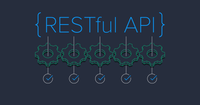
REST stands for Representational State Transfer, a term coined by Roy Fielding in 2000. It is an architecture style for designing loosely coupled applications over the network, that is often used in the development of web services.
REST defines 6 architectural constraints which make any web service - a truly RESTful API i.e. Uniform interface, Client–server, Stateless, Cacheable, Layered system, Code on demand (optional).In my last employment, I designed RESTful APIs for a major telecom company for two good years. In this post, I will be sharing my thoughts apart from standard design practices. You may not agree with me on a few points, and that’s perfectly OK.Let’s start with standard design-specific stuff to clarify what ‘Roy Fielding’ wants us to build. Then we will discuss my thoughts, which will be more towards finer points while you design your RESTful APIs.REST defines 6 architectural constraints which make any web service – a truly RESTful API i.e.

REST makes it easy to implement network-based web services by using the basic construct of the network protocol itself, which in terms of the internet is HTTP. Thus, there's no need for developers to work with custom protocols for client-server message exchanges.
REST was first developed by computer scientist Roy Thomas Fielding in 2000 as part of his Ph.D. dissertation at the University of California, Irvine, titled Architectural Styles and the Design of Network-based Software Architectures.Learn how the REST architectural style makes it relatively simple to build web services and systems that can communicate with each other using common tools.SMTP (Simple Mail Transfer Protocol) is a TCP/IP protocol used in sending and receiving emails over a network such as the ...Compare Amazon VPC vs. Azure VNet for private networking
API’s allow one application can communicate with another. While these used to be in the realm of developers, we’re seeing them more in networking too. Consider orchestration and SDN for example. REST, or Representational State Transfer, is an API that works between a web server and a web client.
API’s allow one application can communicate with another. While these used to be in the realm of developers, we’re seeing them more in networking too. Consider orchestration and SDN for example. REST, or Representational State Transfer, is an API that works between a web server and a web client.Because REST is an architecture, there is no security or network features (like QoS) built in. Other layers provide these features. For example, if you want encryption, use HTTPS as the underlying protocol. This also makes REST easy to use across a firewall or IPS.REST is a resource based API. Every little piece of data that REST deals with is a resource. This covers things like user accounts, IP addresses, and load balancers. We use REST to get information about resources.As an example, go to a site like www.base64encode.org, and encode admin:Password. This will generate the string YWRtaW46UGFzc3dvcmQwMA==. When connecting to a REST service, send the Authorization header, with Basic YWRtaW46UGFzc3dvcmQwMA== as the value.

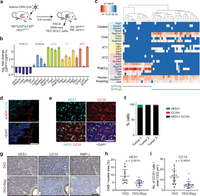
Notch signaling is known to control neuroendocrine fate in the lungs. Shue and colleagues further identify the REST and YAP transcriptional regulators as key components of the Notch signaling pathway in the control of the neuroendocrine cell fate in lung development, lung injury response, and ...
Here we seek to further investigate conserved molecular networks around Notch implicated in the transition from NE to non-NE cell states. We identify REST and YAP as key transcriptional regulators of this transition in multiple contexts.While Rest is a direct target of NICD29, regulatory networks often involve positive and negative feedback loops.Fig. 8: A conserved YAP/Notch/REST network controls the neuroendocrine cell fate in the lungs.Shue, Y.T., Drainas, A.P., Li, N.Y. et al. A conserved YAP/Notch/REST network controls the neuroendocrine cell fate in the lungs. Nat Commun 13, 2690 (2022).
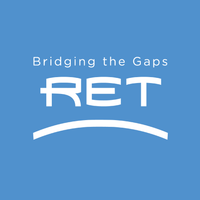
In emergencies, fragile, and conflict areas · Ensuring dignity for the most vulnerable
Visit the post for more.
RT-qPCR, WB, CCK8, wound-healing, and luciferase assays were performed to validate the ceRNA network. Results showed that REST expression was significantly higher in glioma patients than normal samples. Higher REST expression was significantly associated with worse overall survival, ...
RT-qPCR, WB, CCK8, wound-healing, and luciferase assays were performed to validate the ceRNA network. Results showed that REST expression was significantly higher in glioma patients than normal samples. Higher REST expression was significantly associated with worse overall survival, progression-free interval, and worse disease-specific survival in glioma patients.The DEGs of mRNA, miRNA, and lncRNA were identified, and GO and KEGG enrichment analyses were performed. Finally, REST-associated ceRNA networks, including NR2F2-AS1-miR129-REST and HOTAIRM1-miR137-REST, were experimentally validated.In this study, we analyzed the clinical relevance of REST expression, identified REST-associated differential expression genes (DEGs) and performed functional enrichment analysis, and explored the REST-associated ceRNA regulatory network in glioma with its associated differentially expressed (DE)-RNAs, based on The Cancer Genome Atlas (TCGA) database.Kruskal–Wallis test and Wilcoxon signed-rank test were used to analyze the correlation between REST expression and clinical characteristics. Spearman rank correlation was used to analyze the correlation between REST expression and hub genes in ceRNA network.
Represents a VPC Network resource.
Networks connect resources to each other and to the internet.For more information, read Virtual Private Cloud (VPC) Network.[[["Easy to understand","easyToUnderstand","thumb-up"],["Solved my problem","solvedMyProblem","thumb-up"],["Other","otherUp","thumb-up"]],[["Hard to understand","hardToUnderstand","thumb-down"],["Incorrect information or sample code","incorrectInformationOrSampleCode","thumb-down"],["Missing the information/samples I need","missingTheInformationSamplesINeed","thumb-down"],["Other","otherDown","thumb-down"]],["Last updated 2025-06-11 UTC."],[[["This resource represents a VPC Network, which connects various resources to each other and to the internet, as explained further in the Virtual Private

Roy Fielding was involved in the ... improvements — and to identify architectural mismatches. Fielding defined REST in his 2000 PhD dissertation "Architectural Styles and the Design of Network-based Software Architectures" at UC Irvine....
Roy Fielding was involved in the creation of these standards (specifically HTTP 1.0 and 1.1, and URI), and during the next six years he created the REST architectural style, testing its constraints on the Web's protocol standards and using it as a means to define architectural improvements — and to identify architectural mismatches. Fielding defined REST in his 2000 PhD dissertation "Architectural Styles and the Design of Network-based Software Architectures" at UC Irvine.To create the REST architectural style, Fielding identified the requirements that apply when creating a world-wide network-based application, such as the need for a low entry barrier to enable global adoption.He also surveyed many existing architectural styles for network-based applications, identifying which features are shared with other styles, such as caching and client–server features, and those which are unique to REST, such as the concept of resources.The REST architectural style is designed for network-based applications, specifically client-server applications.The constraints of the REST architectural style affect the following architectural properties: Performance in component interactions, which can be the dominant factor in user-perceived performance and network efficiency;
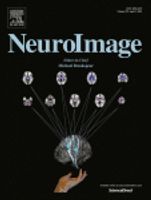
Recent work has demonstrated that individual-specific variations in functional networks (termed “network variants”) can be identified in individuals u…
Recent work has demonstrated that individual-specific variations in functional networks (termed “network variants”) can be identified in individuals using resting state functional magnetic resonance imaging (fMRI). These network variants exhibit reliability over time, suggesting that they may be trait-like markers of individual differences in brain organization.Here, we use precision data from the Midnight Scan Club (MSC) to demonstrate that (1) task data can be used to identify network variants reliably, (2) these network variants show substantial spatial overlap with those observed in rest, although state-specific effects are present, (3) network variants assign to similar canonical functional networks in task and rest states, and (4) single tasks or a combination of multiple tasks produce similar network variants to rest.However, while networks variants are reliable at rest, is is still untested whether they are stable between task and rest states.Together, these findings further reinforce the trait-like nature of network variants and demonstrate the utility of using task data to define network variants.

The inability of neurons to regenerate long axons within the CNS is a major impediment to improving outcome after spinal cord injury, stroke, and other CNS insults. Recent advances have uncovered an intrinsic program that involves coordinate regulation by multiple transcription factors that ...
The hierarchical structure of the TF regulatory network was further characterized so as to identify potential upstream regulators. This step-wise analysis predicted REST, a transcriptional repressor, as an upstream negative regulator inhibiting the core pro-regenerative TFs to drive the expression of regeneration-associated genes (RAGs).To test this, we performed gene expression analysis in the injured CNS with REST and after REST depletion, showing REST increases following CNS injury, while the core pro-regenerative TFs and genes remain suppressed. Depleting REST activates a core molecular program driven by a tightly controlled TF network similar to the one activated during regeneration.Our findings suggested that REST acts as a potential upstream transcriptional repressor, limiting the interactions of the core regenerative TFs to drive the expression of RAGs and the intrinsic growth capacity of CNS neurons (Fig. 1b). This hypothesis was supported by transcriptomic analysis of REST-depleted, CNS-injured neurons, which displayed enhanced expression of a regeneration-associated gene network, driven by several core TFs known to promote regeneration.These findings illustrate how a multi-step systems- biological analysis coupled with substantial in vitro and in vivo experimental validation facilitates for discovery of drivers of CNS repair, and implicate REST as an important regulator of CNS axon regeneration. To determine which of the previously identified pro-regenerative TFs8 are essential drivers of neurons’ intrinsic growth program, we characterized the regulatory network among these TFs to define their directional and hierarchical relationships using the step-wise approach summarized in Fig.
Description of the Virtual Network REST APIs and REST operation groups.
An Azure virtual network (VNet) is a representation of your own network in the cloud. It is a logical isolation of the Azure cloud dedicated to your subscription. You can fully control the IP address blocks, DNS settings, security policies, and route tables within this network.For a more detailed overview, see the Azure Virtual Network product page.

The Utility Network service exposes analytic capabilities (tracing) as well as validation of network topology and management of subnetworks (managing sources, updating subnetworks, exporting subnetworks, and so on).
The active portal account must be licensed with the ArcGIS Utility Network user type extension to use the Utility Network and Network Diagram services. Request URL: https://myserver.esri.com/server/rest/services/LandUse/UtilityNetworkServer · Utility network is Utility Network version 4 ·The capabilities property is new at ArcGIS Enterprise 10.9. This property returns the capabilities that the service supports. These capabilities are not configurable, and are dependent on the version of the utility network being used.The Utility Network service is conceptually similar to the Network Analysis service for transportation networks.Operations:Disable Subnetwork Controller, Disable Topology, Enable Subnetwork Controller, Enable Topology, Export Subnetwork, Query Network Moments, Synthesize Association Geometries, Trace, Update Is Connected, Update Subnetwork, Validate Network Topology
Testing from REST API Explorer, I get values for both. Unfortunately, when I changed the device name to a server name, I get results from PowerShell. But when I use a network device, nothing returns. I checked and confirmed both server and network device are visible in CMDB.
API Rest does not return network devices and only ...I have an API REST url $apiEndpoint = "https:// /api/now/table/cmdb_ci_hardware?sysparm_query=nameLIKEDEVICENAME&sysparm_display_value=true&sysparm_exclude_reference_link=true&sysparm_suppress_pagination_header=true&sysparm_limit=1" Testing from REST API Explorer, I get values for ...I have an API REST url $apiEndpoint = "https:// /api/now/table/cmdb_ci_hardware?sysparm_query=nameLIKE DEVICENAME
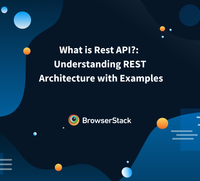
REST (Representational State Transfer) architecture is a widely accepted framework for designing networked applications.
Discover the fundamentals of Rest architecture. Learn how RESTful services enhance web communication and improve application performance.Learn the fundamentals of REST Architecture.Test Rest APIs on real devices with BrowserStack.A REST API is an application programming interface that follows the principles of REST architecture.
Representational State Transfer (REST) is a software architecture that imposes conditions on how an API should work. REST was initially created as a guideline to manage communication on a complex network like the internet. You can use REST-based architecture to support high-performing and reliable ...
Representational State Transfer (REST) is a software architecture that imposes conditions on how an API should work. REST was initially created as a guideline to manage communication on a complex network like the internet. You can use REST-based architecture to support high-performing and reliable communication at scale.API keys are another option for REST API authentication. In this approach, the server assigns a unique generated value to a first-time client. Whenever the client tries to access resources, it uses the unique API key to verify itself. API keys are less secure because the client has to transmit the key, which makes it vulnerable to network theft.Find out what is RESTful API, how and why businesses use RESTful APIs, and how to use API Gateway with AWS.RESTful API is an interface that two computer systems use to exchange information securely over the internet. Most business applications have to communicate with other internal and third-party applications to perform various tasks.
Learn more about [Virtual Networks Network Interfaces Operations]. How to [Create Or Update,Delete,Get,Get Effective Route Table,List,List All,List Effective Ne

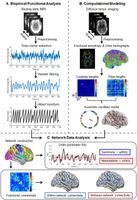
Spontaneous brain activity is organized into resting-state networks (RSNs) involved in internally-guided, higher-order mental functions (default mode, central executive and salience networks) and externally-driven, specialized sensory and motor processing (auditory, visual and sensorimotor ...
Spontaneous brain activity is organized into resting-state networks (RSNs) involved in internally-guided, higher-order mental functions (default mode, central executive and salience networks) and externally-driven, specialized sensory and motor processing (auditory, visual and sensorimotor networks).Scientific Reports - Linking functional connectivity and dynamic properties of resting-state networksSensory and motor RSNs showed greater cohesion and metastability, likely to respectively reflect their functional specialization and their greater capacity for altering network states in response to multiple and diverse external demands. Our findings suggest that functional and dynamic RSN properties are closely linked and expand our understanding of the neural architectures that support optimal brain function. ... Brain activity at rest is organized into functional resting-state networks (RSNs) defined by their spatiotemporal configuration and functional roles1,2,3,4.Specifically, we hypothesized that the role of internally-guided RSNs as connector networks would be associated with lower metastability and synchrony; lower metastability would enable connector networks to maintain relatively stable configurations over time to sustain ongoing mental operations, consistent with the dynamic behavior of these networks during tasks13, while lower synchrony at rest would enable connector networks to adopt variable configurations in order to support diverse mental operations13.
Network management API for Distributed Cloud Edge. ... To call this service, we recommend that you use the Google-provided client libraries. If your application needs to use your own libraries to call this service, use the following information when you make the API requests. A Discovery Document is a machine-readable specification for describing and consuming REST ...
Network management API for Distributed Cloud Edge. ... To call this service, we recommend that you use the Google-provided client libraries. If your application needs to use your own libraries to call this service, use the following information when you make the API requests. A Discovery Document is a machine-readable specification for describing and consuming REST APIs.https://edgenetwork.googleapis.com/$discovery/rest?version=v1 · A service endpoint is a base URL that specifies the network address of an API service. One service might have multiple service endpoints.[[["Easy to understand","easyToUnderstand","thumb-up"],["Solved my problem","solvedMyProblem","thumb-up"],["Other","otherUp","thumb-up"]],[["Hard to understand","hardToUnderstand","thumb-down"],["Incorrect information or sample code","incorrectInformationOrSampleCode","thumb-down"],["Missing the information/samples I need","missingTheInformationSamplesINeed","thumb-down"],["Other","otherDown","thumb-down"]],["Last updated 2025-07-11 UTC."],[[["\u003cp\u003eThis page provides documentation for the Network Management API for Distributed Cloud Edge, accessible via the \u003ccode\u003eedgenetwork.

REST is an architecture style definition applied to networked applications. It exists as a series of constraints applied to the implementation of network components, enabling uniform interface semantics, rather than application-specific implementations and syntax.
It exists as a series of constraints applied to the implementation of network components, enabling uniform interface semantics, rather than application-specific implementations and syntax. REST as a network architecture was first documented by Roy Fielding in his doctoral thesis titled Architectural Styles and the Design of Network-based Software Architectures, published in 2000.Acronym purists often write it as ReST, because the E in REST does not actually stand for anything. It is merely the second letter of the word representational. This prevents controversy on how to pronounce it, like the one that has plagued GIF in recent years. With the E included, there is no confusion when pronouncing the more accurate acronym of RST as “wrist” or even as R-S-T. Custom alerts and data visualization let you quickly identify and prevent network health and performance issues.The act of checking the cookie versus all of the data in every message would be an example of a non-self-descriptive message, and thus not technically RESTful. ... Hypermedia is similar to the concept of hypertext, or hyperlinks, except that it encompasses all forms of media and not just text or links. It is a non-linear way of providing information or data typically via following a link or other marker in a published resource such as a web page. Hypermedia may be text, graphic, video or other data forms. Under HATEOAS, a client interacts via a network through hypermediaPRTG is a comprehensive network monitoring software and keeps track of your entire IT infrastructure. ... In a blog post on his now abandoned blog, Roy Fielding discussed what criteria an API must meet in order to be considered truly RESTful.

REST makes it easy to implement network-based web services by using the basic construct of the network protocol itself, which in terms of the internet is HTTP. Thus, there's no need for developers to work with custom protocols for client-server message exchanges.
REST was first developed by computer scientist Roy Thomas Fielding in 2000 as part of his Ph.D. dissertation at the University of California, Irvine, titled Architectural Styles and the Design of Network-based Software Architectures.Learn how the REST architectural style makes it relatively simple to build web services and systems that can communicate with each other using common tools.SMTP (Simple Mail Transfer Protocol) is a TCP/IP protocol used in sending and receiving emails over a network such as the ...Compare Amazon VPC vs. Azure VNet for private networking





